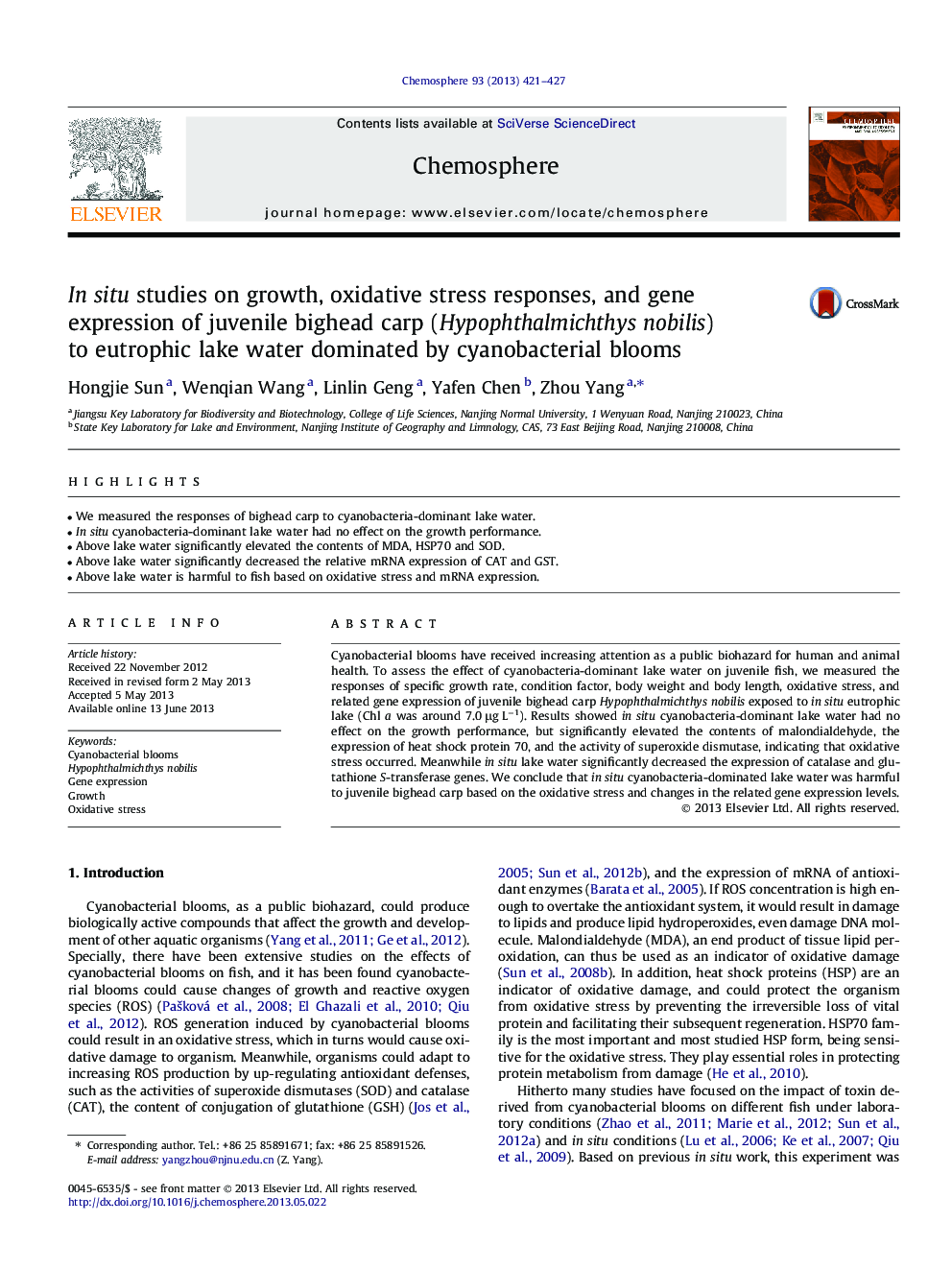| Article ID | Journal | Published Year | Pages | File Type |
|---|---|---|---|---|
| 6310584 | Chemosphere | 2013 | 7 Pages |
Abstract
Cyanobacterial blooms have received increasing attention as a public biohazard for human and animal health. To assess the effect of cyanobacteria-dominant lake water on juvenile fish, we measured the responses of specific growth rate, condition factor, body weight and body length, oxidative stress, and related gene expression of juvenile bighead carp Hypophthalmichthys nobilis exposed to in situ eutrophic lake (Chl a was around 7.0 μg Lâ1). Results showed in situ cyanobacteria-dominant lake water had no effect on the growth performance, but significantly elevated the contents of malondialdehyde, the expression of heat shock protein 70, and the activity of superoxide dismutase, indicating that oxidative stress occurred. Meanwhile in situ lake water significantly decreased the expression of catalase and glutathione S-transferase genes. We conclude that in situ cyanobacteria-dominated lake water was harmful to juvenile bighead carp based on the oxidative stress and changes in the related gene expression levels.
Related Topics
Life Sciences
Environmental Science
Environmental Chemistry
Authors
Hongjie Sun, Wenqian Wang, Linlin Geng, Yafen Chen, Zhou Yang,
